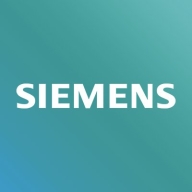

IBM DOORS and Polarion Requirements compete in the requirements management category. Based on the comparisons, Polarion has an edge due to its integration flexibility and usability.
Features: IBM DOORS provides extensive customization through DXL scripting, offering strong traceability and complex requirement management. It integrates well with numerous engineering tools. Polarion Requirements offers seamless integration and user-friendly interfaces, making it ideal for collaborative environments. Its strength lies in effective integration and adaptability to multiple platforms.
Room for Improvement: IBM DOORS has a dated infrastructure and complex interface, posing challenges for new users and integration with non-standard tools. Simplification of DXL usage would aid users. Polarion Requirements can enhance user configuration and scalability for large-scale items, along with improving bulk editing and traceability alerts.
Ease of Deployment and Customer Service: IBM DOORS mainly provides on-premises deployment with some hybrid cloud options, limiting cloud integration flexibility. Its customer service experiences mixed reviews due to organizational transitions. Polarion Requirements supports on-premises, private, and public cloud deployments, providing greater adaptability. It generally receives positive feedback for its support and service responsiveness.
Pricing and ROI: IBM DOORS has a high cost reflecting its extensive features, potentially burdening smaller firms. Despite this, it offers significant ROI for large projects requiring rigorous requirement management. Polarion Requirements has a flexible pricing model based on user roles, appealing to businesses seeking tailored investment solutions. The choice often depends on specific project needs and budget allowances.
| Product | Market Share (%) |
|---|---|
| IBM DOORS | 30.6% |
| Polarion Requirements | 15.1% |
| Other | 54.3% |


| Company Size | Count |
|---|---|
| Small Business | 12 |
| Midsize Enterprise | 10 |
| Large Enterprise | 36 |
| Company Size | Count |
|---|---|
| Small Business | 6 |
| Midsize Enterprise | 3 |
| Large Enterprise | 5 |
IBM Engineering Requirements Management DOORS (DOORS) is a Requirements Management (RM) software designed to help organizations manage engineering project requirements throughout the development lifecycle. It provides a central location for capturing, defining, and organizing project requirements, facilitating communication and collaboration among stakeholders like engineers, system designers, and customers. Key features include requirements traceability, version control, and impact analysis, ensuring effective implementation and testing. DOORS improves efficiency, enhances communication, reduces risks, and supports better decision-making through clear visibility into requirements. Compared to its newer, web-based counterpart DOORS Next, the mature DOORS 9 offers a wider range of features with a traditional user interface but lacks web-based functionality and modern integration with IBM Engineering Lifecycle Management (ELM) tools.
We monitor all Application Requirements Management reviews to prevent fraudulent reviews and keep review quality high. We do not post reviews by company employees or direct competitors. We validate each review for authenticity via cross-reference with LinkedIn, and personal follow-up with the reviewer when necessary.